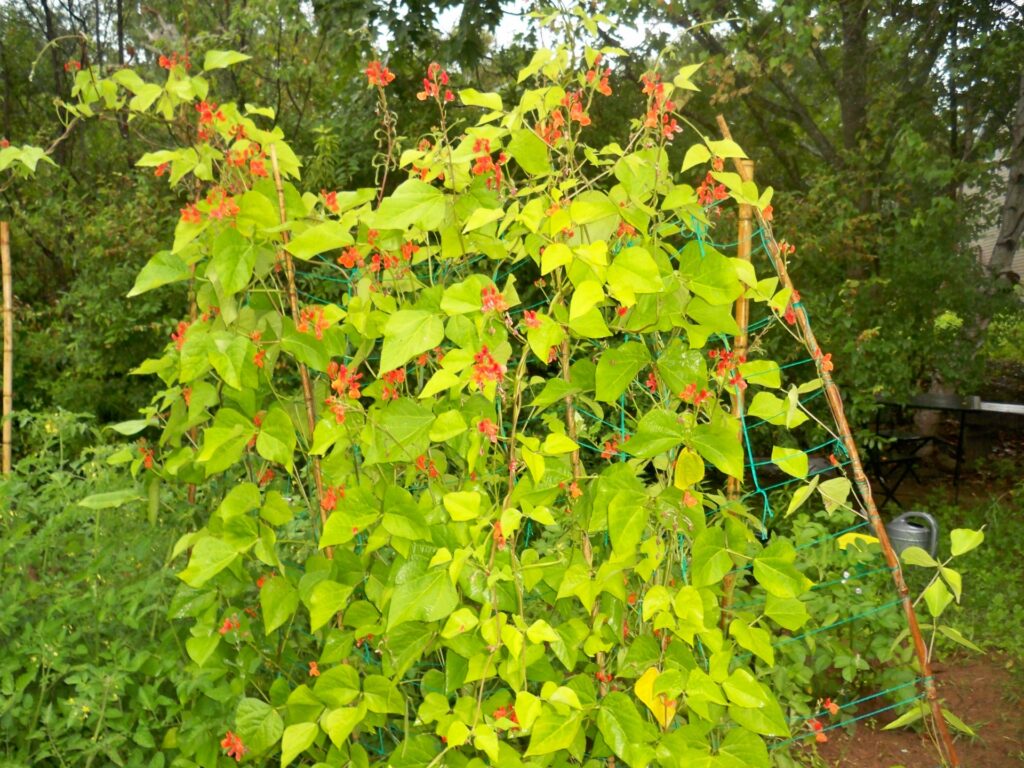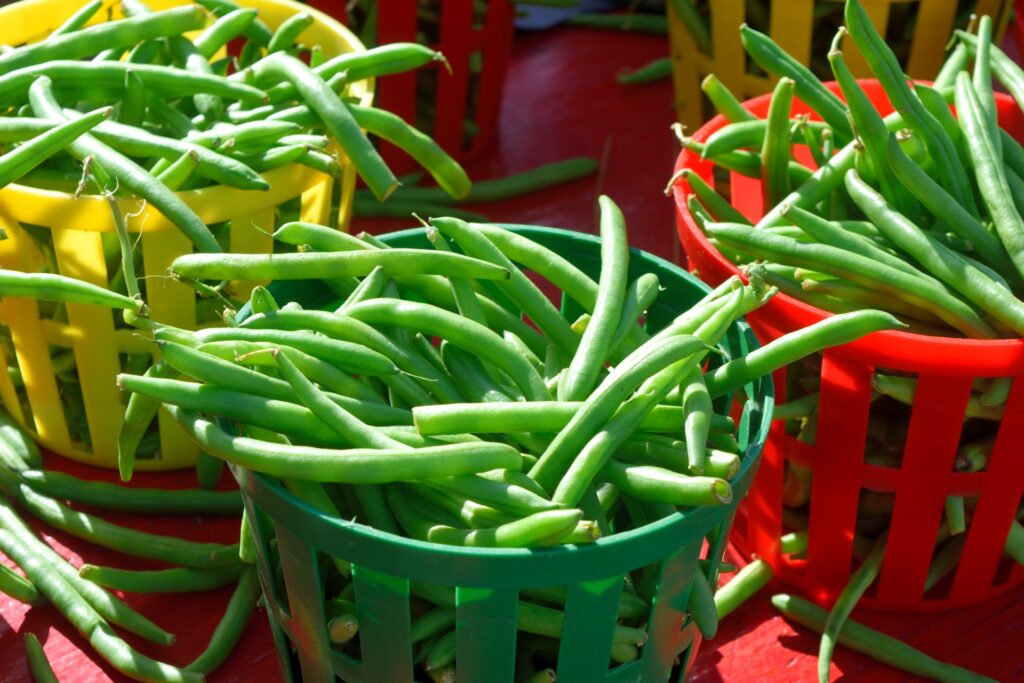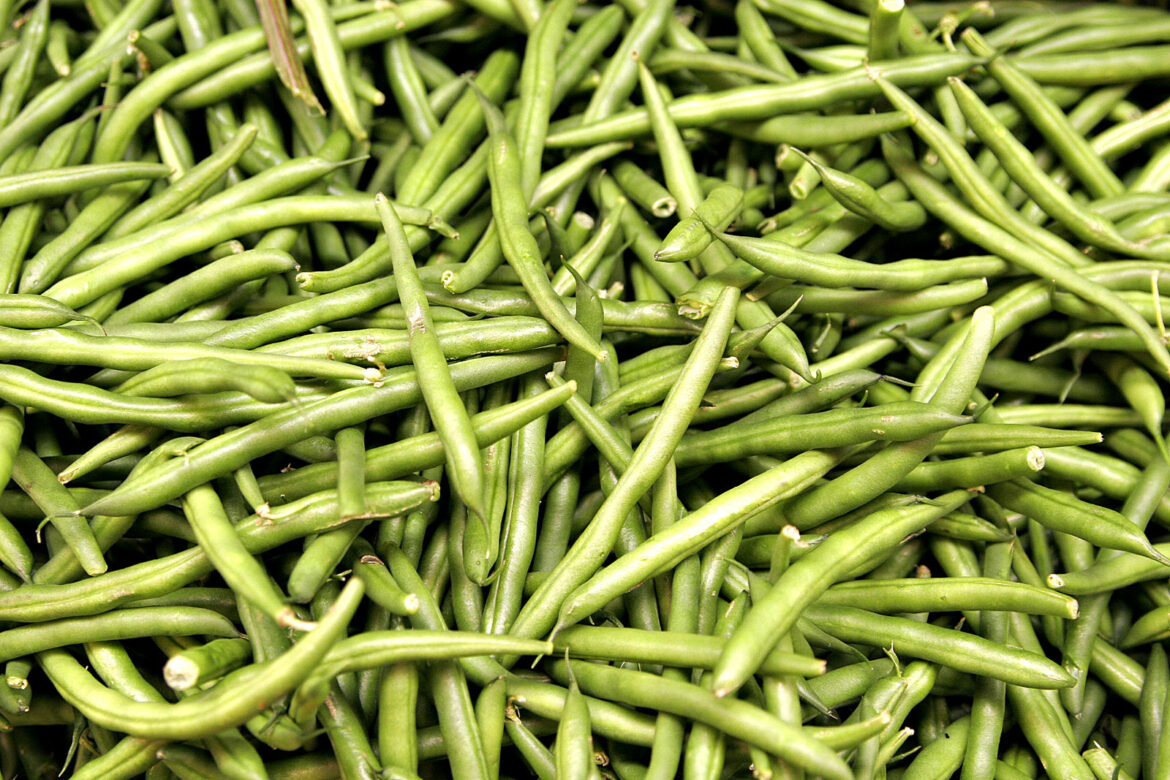Beans are a warm-season crop, tender to light frosts and freezes. Bush beans are usually determinate, with one clean harvest, so plant every 10 days for a continuous harvest. Pole beans are usually indeterminate with a continuous harvest for 6-8 weeks, so only one planting is necessary if kept picked. Bare roots don’t tolerate disturbances, so handle seedlings minimally. Plan on planting an average of 10-20 plants per person.
Where to Grow Beans:
Beans can be grown in average soil, almost anywhere in the United States. They grow best if the soil is well-drained and the summer is consistently warm. Seeds will rot in the ground in cold, damp weather. Since Beans are subject to downy mildew, they should not be grown where there are cold summer fogs.
Bean Varieties
- Bush –
- Tendercrop; Top Crop; Burpee’s Tenderpod; Provider
- Bush Wax
- Eastern Butter Wax; Burpee’s Brittle Wax; Pencil Pod Wax
- Pole
- Kentucky Wonder; Blue Lake; Scarlet Runner
- Lima
- Fordhook 242; Henderson
- Pole Lima
- King of the Garden
- Other Beans
- Bush or pole Romano, Italian broad bean; French Horticultural, broad or fava bean.
Soil for Beans
Warm soil is essential, especially for Lima beans. pH range should be between 6 and 7, just slightly acidic. Bush beans will thrive in fertile loam soil without the addition of fertilizer. Too much fertilizer will promote extensive foliage growth and little crop. Lima beans and pole beans are heavy feeders. Legume inoculates are available from seed suppliers for seed treatment and is recommended especially if beans or peas have not been grown in the soil before.
Planting Beans
When –
After the soil is sufficiently warm – temperatures above 75 degrees, beans are easily killed by frost. Plan on an average of 10-20 plants per person.
Some gardeners recommend presoaking seeds before planting, but research indicates soaked seeds absorb water too quickly, causing the outer coats to spill out essential nutrients, which encourages seed rot. Yields can increase 50-100% by inoculating with Rhizobium bacteria. To inoculate, roll seeds in the powder before planting.
How to Grow Beans
Bush Beans: Germination in 7 days. Plant seeds 2 inches apart, 1 1/2 inches deep in rows 2 feet apart. Thin to about 6-8 plants per foot of row. Bean plants produce the bulk of their crop for a 2 week period. Rather than plant the entire row, sections should be planted at 2-week intervals until mid-July or 8 weeks before the first killing frost. This will assure a steady crop all summer. Harvest: Average 50 days.
Wax, Lima Beans: Germination in 10 days. Plant seeds 3-4 inches apart, with eyes down, 1 inch deep in rows 2 feet apart. Two plantings a month apart produce a prolonged harvest. Harvest: Average 65-75 days.
| Temperature | |
| Germination | 60 - 85 F |
| For growth | 60 - 70 F |
| Soil and Water | |
| Fertilizer | Because beans fix N when inoculated properly, they should require low N; after they flower apply light N, avoid K. |
| pH | 6.2 - 7.5 |
| Water | Low before flowering, average afterwards. |
| Measurements | |
| Seed Planting Depth | 1 - 2" |
| Root Depth | 36 - 48" |
| Height | |
| Pole | 8 - 15' |
| Bush | 10 - 24" |
| Width | 4 - 8" |
| Space between plants | |
| In Beds | |
| Pole | 6" |
| Bush | 2 - 4" |
| In Rows | |
| Pole | 12" |
| Bush | 4 - 6" |
| Space between rows | 18 - 36" |
| Average plants per person | 10 - 20 |
| Support Structure | |
| Use 6' posts, A frame, tepee, or trellis to support pole beans. Alternatively, plant non-rampant pole beans between corn that isn't too densely planted when the corn is 6-8" tall. | |
| Harvest | |
| Pick early in morning, after leaves are dry. Harvest before seeds bulge, when beans snap off the plant and snap in half cleanly. Continual harvest is essential for prolonged production. | |
| First Seed Starting Date: | 14 - 28 Days before last frost date |
| Last Seed Starting Date: | 80 - 133 Days before first frost date |
| Companions | |
| Companions | Carrot, chard, corn, cucumber, eggplant, peas, radish, strawberry. |
| Incompatibles | Basil, fennel, garlic, gladiolus, onion family. |

Pole Beans: Germination in 8 to 14 days. Set 3 rough barked, 6-foot poles in the ground, tepee fashion, and tie together at the top. Leave 3 to 4 feet between the pole groups. Make a hill at the base of each pole, enriched with compost or well-rotted manure, and plant 6-8 seeds in each. After the second pair of true leaves appear, thin to 3 plants per pole. With regular harvesting, the pole beans should bear all summer.
Harvest: 65 days.
Cultivation for Beans
Keep rows weed-free with shallow cultivation or heavy mulching; beans are shallow-rooted, and should not be cultivated deeply. Never work around beans after a rainfall or in the early morning when the leaves are still wet from dew. The plants are susceptible to rust, which spreads when the foliage is wet. Water weekly and deeply during dry spells, as beans need constant soil moisture to develop properly. Feed pole varieties by working a thin band of 5-10-5 or 4-12-12 around each hill, once at planting time and again as beans start to form. In addition, pinch off the growing tips of pole beans when plants reach the top of their support system.

| Storage Requirements | ||
|---|---|---|
| Blanch before freezing | ||
| Fresh | ||
| Temperature | Humidity | Storage Life |
| 32 - 35F | 95 - 100% | 2 - 3 weeks |
| Preserved | ||
| Method | Taste | Shelf Life |
| Canned | Good | 12+ months |
| Frozen | Excellent | 12 months |
| Dried | Excellent | 24 months |
Harvesting Beans
Watch plants carefully as beans start to form and harvest every 2-3 days. Beans are ready to pick when the pods are well-formed and rounded and snap readily if bent in half. Wax beans should have a good yellow color. Be sure to lift up the bean plants and look under the foliage to pick every ripe bean. This will promote a continued crop. If beans are left on the plants too long, the seeds overdevelop and the pods become tough. Poorly formed pods are caused by too dry soil, poor infertile soil, or insect damage. Lima beans are picked when the pods are well filled and still green in color. If the pods are yellowing, the beans are too mature and can be left on the vine and picked later to use as dry beans.
Bean Pests
- Mexican Bean beetle – A coppery brown beetle with black spots that lays yellow eggs and goes through an ugly nymph stage. Crush the yellow egg clusters when seen and handpick beetles. Plant marigolds between rows to repel beetles.
- Aphids – Plant nasturtiums between rows.
Bean Diseases
Bean seed is often pretreated before sale with Captan, a fungicide that protects the seed from germination in wet weather.
- Anthracnose: Clean up after crop is harvested. Never work around wet beans, and buy quality seed.
- Bacterial blight: Clean up after crop is harvested. Never work around wet beans, and buy quality seed.
- Mosaic: Select resistant varieties.
- Downy mildew: Do not grow in foggy regions.
